Ba Dinh Square: A Journey Through Vietnam’s Historical Heart
The only place that truly conveys the spirit of Vietnam’s past, present, and national pride is Ba Dinh Square. The most significant events in the recent history of the country have taken place at this well-known location, which is located in the capital city of Hanoi. Ba Dinh stands for more than just remembrance and unity among the people of the country. Explore the world with MOTOGO Tours.
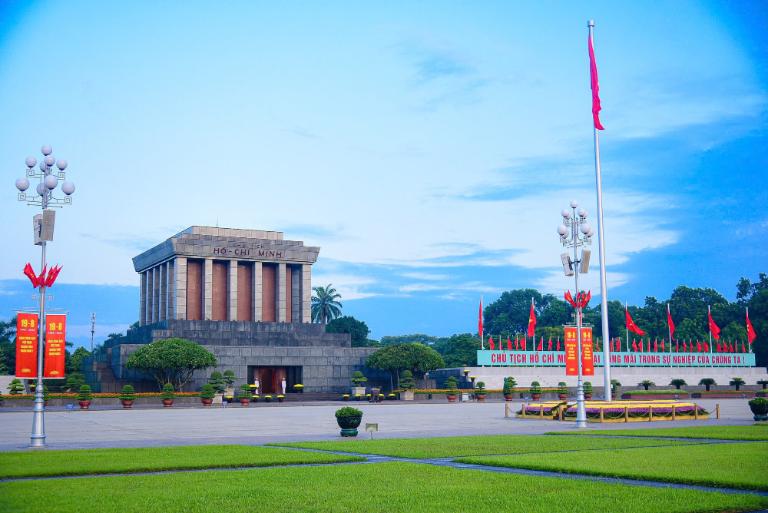
A Glimpse into History of Ba Dinh Square
With its rich history, Ba Dinh Square has been used as a symbolic platform for Vietnam’s turbulent yet inspirational march toward independence. The square, which is in the center of Hanoi, has played a key role in many important events that have defined the nation. But its history starts long before it became a source of national pride.
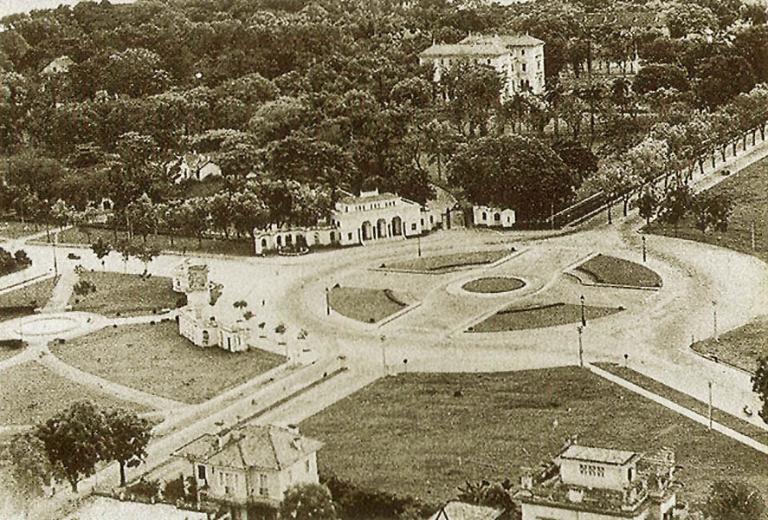
The square was originally constructed during the French colonial era, when Vietnam was a part of French Indochina. The French established the area as a public gathering place for festivals, celebrations, and military parades signifying their authority over the area. But over time, this specific place would come to symbolize the resistance and independence fight in Vietnam.
The name “Ba Dinh” itself alludes to a 19th-century rebellion in Thanh Hoa Province’s Ba Dinh District, where Vietnamese rebels valiantly battled French forces. Although the Vietnamese did not triumph in the Ba Dinh Uprising (1886–1887), it did light a nationalist fire that would last for decades. Later on, the square was given its name in remembrance of this uprising, signifying the desire to resist and struggle for independence.

On September 2, 1945, Ho Chi Minh stood in front of a sizable gathering of tens of thousands of Vietnamese people and announced the country’s independence from French colonial control, which led to Ba Dinh Square’s international recognition. That day, Ho Chi Minh recited the Vietnamese Declaration of Independence from a modest wooden podium, echoing the language and principles of the French Revolution as well as the American Declaration of Independence. He declared the establishment of the Democratic Republic of Vietnam, ushering in a new era in the history of the nation.
>>> Explore: History of Hanoi: A Journey Through Vietnam’s Capital
Surrounding Landmarks of Ba Dinh Square
Ba Dinh Square is surrounded by other historically and culturally significant landmarks that add to its significance, making it more than just a single monument in the center of Hanoi. Visitors can gain a clearer understanding of Vietnam’s political legacy, culture, and history by visiting these places.
Ho Chi Minh’s Mausoleum
Ba Dinh Square is home to one of Vietnam’s most well-known structures, the Mausoleum of Ho Chi Minh. The location of the preserved body of Ho Chi Minh, the nation’s venerated leader, is a powerful source of national pride. The mausoleum is more than just a place of death; millions of Vietnamese and foreign visitors come here to pay their respects and with a great deal of reverence.
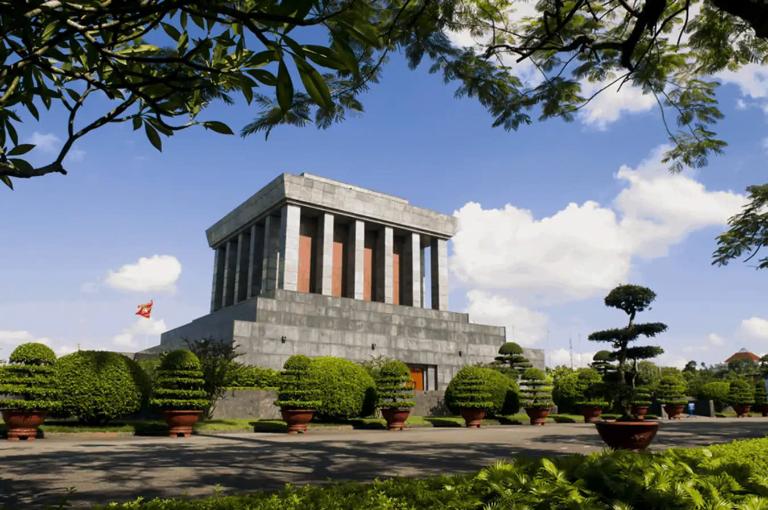
A masterpiece of modern architecture, the Ho Chi Minh Mausoleum blends Soviet and traditional Vietnamese design features. The majestic and mournful structure was inspired by Lenin’s tomb in Moscow, but it also honors regional traditions by using Vietnamese marble and wood. The mausoleum is 21.6 meters high and 41.2 meters wide, with polished grey and red stone on the inside and granite outside.
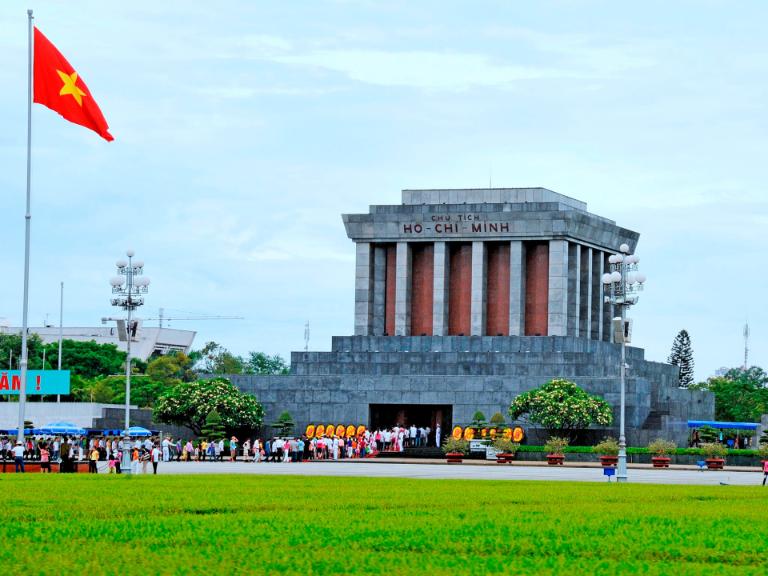
The mausoleum is surrounded by well-kept lawns and fragrant flower beds, which are meant to symbolize the peaceful ideals that Ho Chi Minh advocated throughout his life. The wide square outside represents openness, and the design’s use of simple, basic forms emphasizes the late leader’s realism and humility.
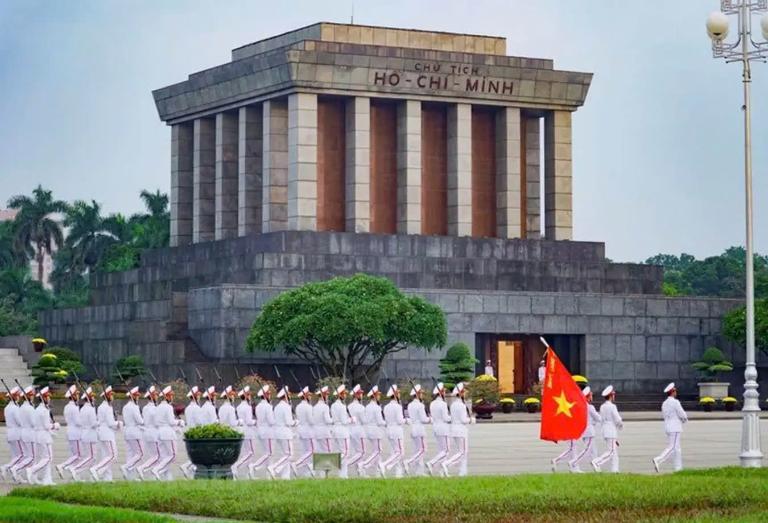
The most moving item within the tomb is the embalmed body of Ho Chi Minh, which is kept in a glass case. In the main chamber, his body is on exhibit, resting in a serene posture. With the utmost care, visitors are led through the silent, gloomy passageways.
The Presidential Palace
Near Ba Dinh Square, the Presidential Palace is a magnificent example of a French colonial structure. It is a representation of Vietnam’s colonial past and its transition into a free and independent country, painted in a vivid mustard yellow. Constructed between the years 1900 to 1906, the initial purpose of this building was to house the French Governor-General of Indochina. Its sophisticated architecture, which includes arched doors, lofty windows, and iron fences, is reminiscent of the lavish European design of the early 20th century.

The One Pillar Pagoda
One of the most recognizable images of Hanoi and Vietnam is the One Pillar Pagoda. Located only a short stroll from Ba Dinh Square, this petite yet exquisite pagoda was built in 1049 during the Lý Dynasty’s Emperor Lý Thái Tông’s reign. It is an architectural marvel due to its unusual design, which places it on a lone stone pillar in the center of a lotus pond. The building was designed to mimic a lotus blossom, which is a Buddhist symbol for purity.
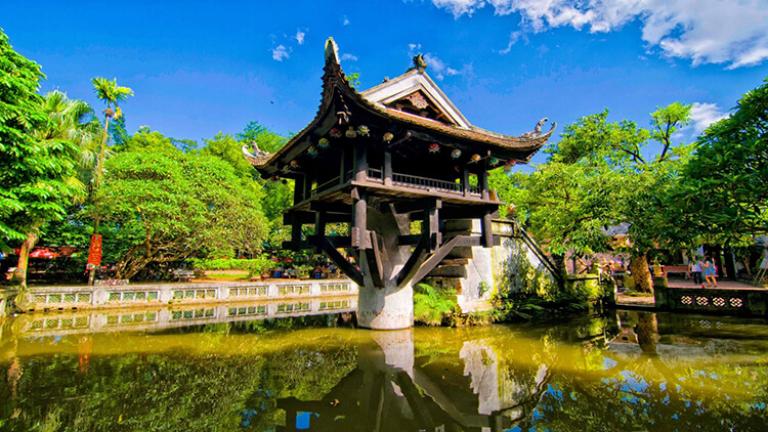
The Ho Chi Minh Museum
A short distance from Ba Dinh Square, the Ho Chi Minh Museum provides an in-depth look into the life and legacy of one of Vietnam’s most revered leaders. Opened in 1990 to commemorate Ho Chi Minh’s 100th birthday, the museum takes visitors on a journey through the key moments of his life, from his early years as a revolutionary to his role in leading Vietnam to independence.

Each of the numerous themed parts that make up the museum represents a distinct stage in the life of Ho Chi Minh. Personal belongings, pictures, records, and even artwork are on display; they all contribute to the narrative of his commitment to his people and his dream of an independent Vietnam. It is possible to comprehend Uncle Ho’s significant influence on the Vietnamese people and the reasons why his legacy continues to motivate future generations by visiting the Ho Chi Minh Museum.
The National Assembly Building
The National Assembly Building is a significant landmark close to Ba Dinh Square, although not being cited as much. Important political decisions are taken there when Vietnam’s top legislative body convenes. This contemporary architectural wonder, which opened its doors in 2014, contrasts with the more conventional and older structures surrounding the area. Its modern, streamlined design pays homage to Vietnam’s rich political past, while its proximity to Ba Dinh Square symbolizes the country’s evolution into a more globalized and sophisticated culture.
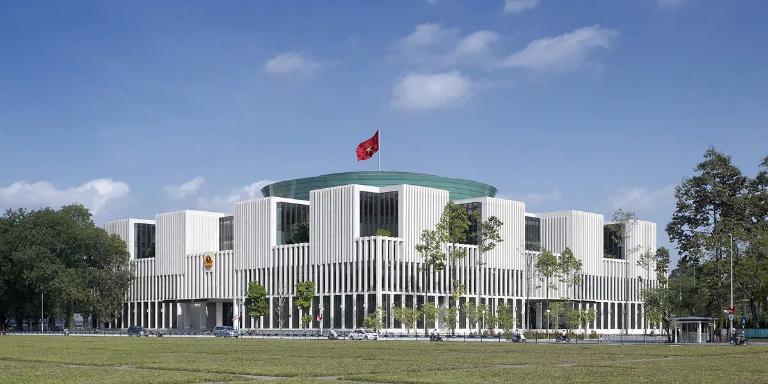
The Flag Tower of Hanoi
Near Ba Dinh Square, the Hanoi Flag Tower is another important historical site that attracts tourists curious about Vietnam’s past. Constructed in 1812, throughout the Nguyễn Dynasty, this recognizable tower functioned as a watchtower for the Imperial Citadel of Thang Long, a monument recognized as a UNESCO World Heritage site. The Flag Tower, which rises to a height of more than 33 meters, is a unique reminder of Vietnam’s past because it is one of the few buildings in Hanoi to have withstood both the French and American invasions.
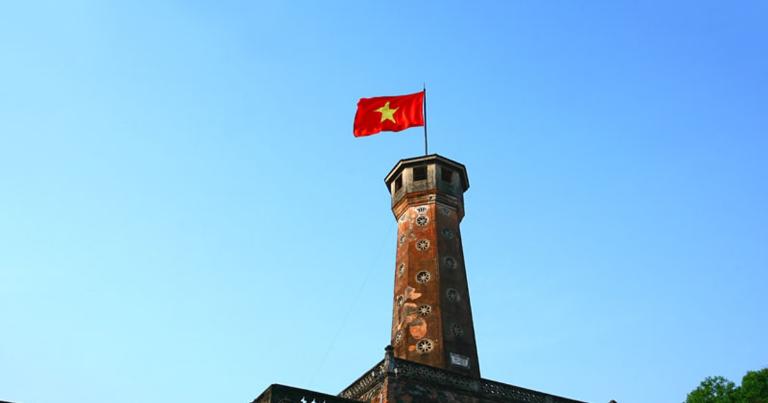
The Vietnam Military History Museum
The Vietnam Military History Museum, which is next to the Flag Tower, has thorough exhibits on Vietnam’s numerous conflicts, with a special emphasis on the wars against the French and the Americans, for people who are interested in the country’s military history. It holds a collection of relics, armaments, and vehicles from both sides of the wars, including as tanks and airplanes.

The Temple of Literature
The Temple of Literature is sufficiently close to Ba Dinh Square, even though it is not just next door, to warrant a visit. Founded in 1070, this historic location honoring Confucius is home to Vietnam’s first national university. It’s a calm area renowned for its lovely gardens and classic Vietnamese buildings.
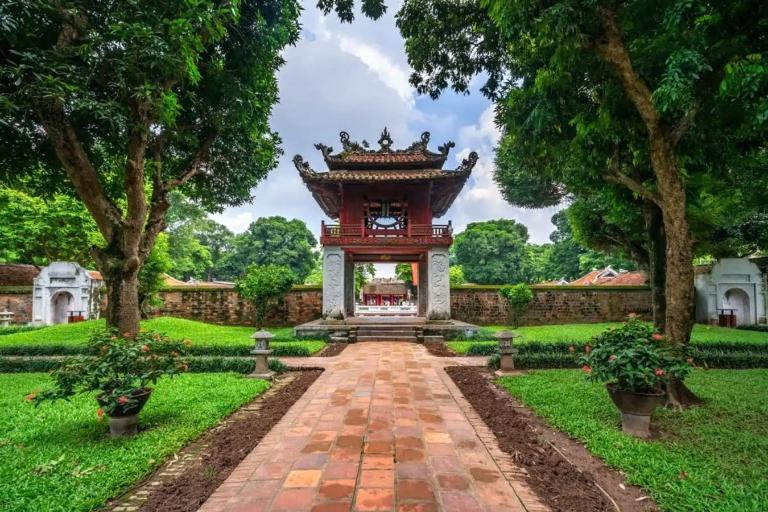
Visiting Ba Dinh Square
For tourists and locals alike, Ba Dinh Square is a must-see destination. Here’s everything you need to know before you plan your visit.
Best Time to Visit
Early in the morning or late in the afternoon, when there are fewer tourists and the weather is cooler, is the ideal time to visit Ba Dinh Square. When Hanoi’s streets are carpeted with golden leaves in the fall, the square is especially lovely.
How to Get There
Because Ba Dinh Square is centrally placed in Hanoi, it is easily accessible by a number of different modes of transportation. Travelers have the option of using the public bus system, motorbikes, or cabs. It’s easy to fit into a tourist day because it’s conveniently located close to several of Hanoi’s well-known sights.
In addition, to enhance your experience, you can choose guided tours like Hanoi Motorbike Tours. They will provide a comprehensive overview of Ba Dinh Square’s history and significance
Practical Tips for Visitors
- Dress Respectfully: Since Ba Dinh Square is a site of national importance, it’s important to dress modestly, especially if you plan to enter the mausoleum.
- Timing: The mausoleum is closed on Mondays and Fridays, so plan your visit accordingly.
- Photography: While you can take pictures in the square, photography is strictly prohibited inside the mausoleum.

Ba Dinh Square is a living representation of Vietnam’s resilience, solidarity, and pride rather than just a historical site. Every aspect of Ba Dinh Square, from the majestic Ho Chi Minh Mausoleum to the serene One Pillar Pagoda, exudes the spirit of a country that has bravely struggled for its place in the world. Regardless of your interest in history or just simply curiosity, Ba Dinh Square provides an insightful and incredibly touching encounter.
Related Posts:












Be the first to comment!